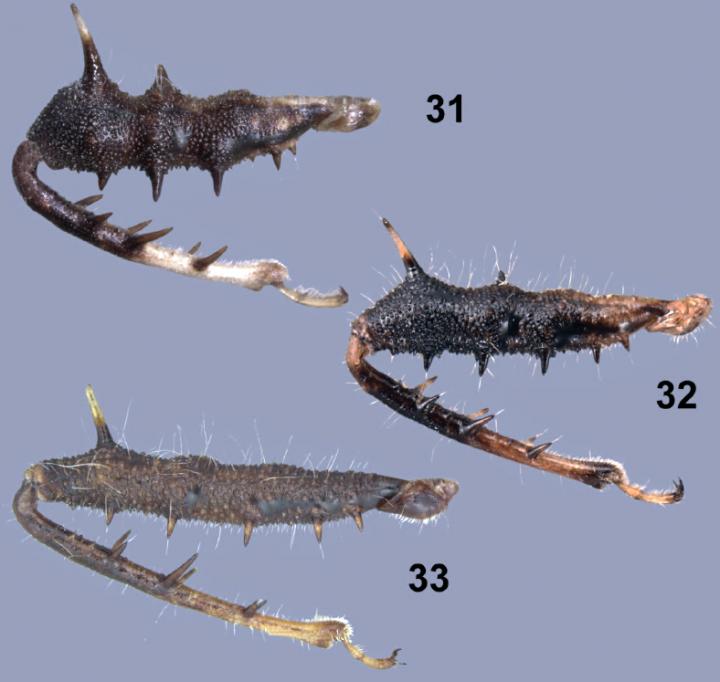Sometimes new insect species are discovered in the wild but a lot of times they are discovered in the drawers of old museum collections.
And sometimes they are discovered by accident, which is how Dr. J. E. McPherson, professor emeritus at Southern Illinois University, discovered a new species of assassin bug.
In 2006, Dr. McPherson was working with colleagues on a key to the nymphs of three midwestern species of assassin bug in the genus Sinea (i.e., S. complexa, S. diadema, and S. spinipes). To test their key for accuracy, they asked several others to check it by comparing it with insects in their collections or laboratories. All of them found the key to be satisfactory, except for one -- Dr. Scott Bundy from New Mexico State University, who found discrepancies in specimens that had been collected in New Mexico and identified as S. complexa.
 These are the prothoracic legs of S. incognita (top), S. complexa (middle), and S. integra (bottom). Notice the difference in thickness of the femora. Credit: Entomological Society of America
These are the prothoracic legs of S. incognita (top), S. complexa (middle), and S. integra (bottom). Notice the difference in thickness of the femora. Credit: Entomological Society of America
"Jay asked me to review his key because he knew I had been rearing a species of Sinea in New Mexico," said Dr. Bundy. "When my bugs would not key out properly, I assumed there was just an error in the key. I then sent him some western specimens, and he saw that they actually were two different species."
As it turned out, Dr. Bundy's specimens were indeed Sinea complexa. However, the Midwestern species, which is very similar to S. complexa, was new to science but had remained undiscovered until now.
"I have named this species S. incognita to indicate that it has remained hidden for over 100 years as S. complexa, to which it is closely related," Dr. McPherson wrote.
Since its original description, scientists had believed S. complexa and S. incognita to be a single species that was found from California to Missouri and Illinois. This long-time hidden identity is responsible for the new bug's specific epithet.
The two species also are separated by geography as Sinea complexa occurs in the western and southwestern United States south into Mexico, whereas Sinea incognita occurs from Maryland south to Georgia and west to Kansas and Texas.
The new species -- Sinea incognita -- is described in the Annals of the Entomological Society of America in an article that also explains the differences between it and its close relatives, the aforementioned S. complexa and another called S. integra, which is found from Arizona and Texas south through Mexico to, at least, Guatemala and Honduras.
The easiest way to tell the difference between the three species is by looking at the femora of their front legs. The femur of S. incognita is big and round on one end, but is much narrower on the other -- kind of like a caveman's club. The femur of S. complexa is similar, but the big end is not as large, making it look more like a baseball bat. Finally, the femur of S. integra is nearly the same size on both ends, making it look more like a stickball bat.
Article: "Sinea incognita McPherson, a New Species of Assassin Bug from America North of Mexico, with Designations of Lectotypes and Paralectotypes for Sinea complexa and Sinea integra and Analysis and Comparison of the Three Species (Hemiptera: Heteroptera: Reduviidae: Harpactorinae)," http://aesa.oxfordjournals.org/lookup/doi/10.1093/aesa/sau003